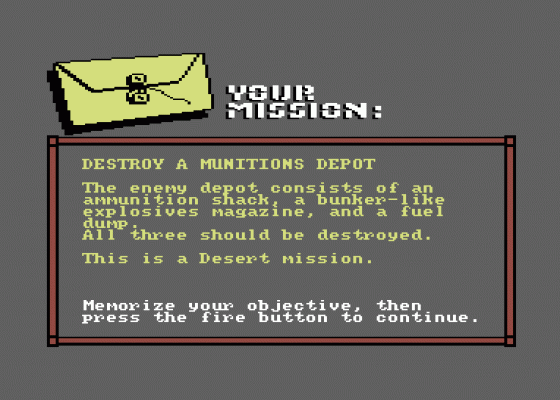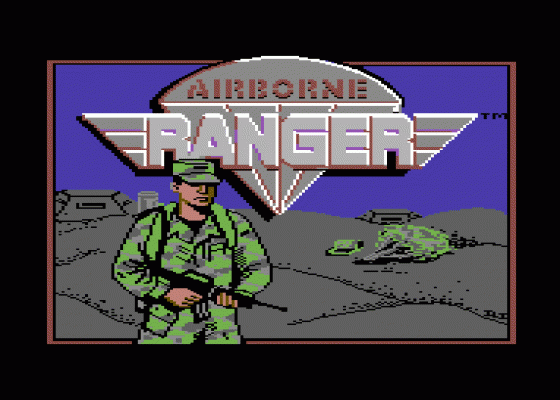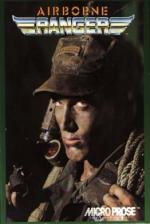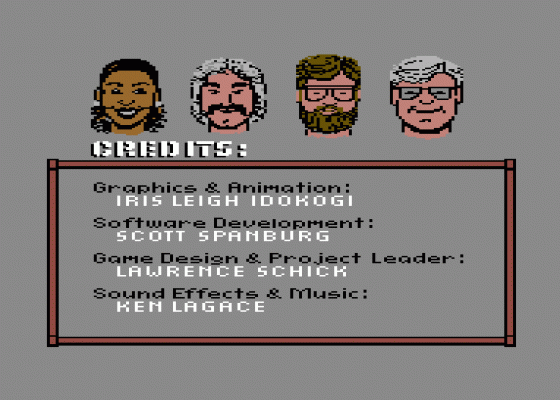
Commodore User
 1st December 1987
1st December 1987
Categories: Review: Software
Author: Bohdan Buciak
Publisher: Microprose
Machine: Commodore 64/128
Published in Commodore User #51
Airborne Ranger
It says here that, to become an Airborne Ranger, you must be able to climb the toughest mountains, survive for five days in the blazing heat of the desert and then undertake guerilla warfare in the jungle. Doesn't sound that tough to me, but I can eat three shredded wheat.
MicroProse's Airborne Ranger isn't just a survival test but a series of missions designed to let you use both your zapping and your strategic skills. It's not one of those boring war games, nor is it an out and out blaster like Commando.
It's the best of both worlds, allowing you full control over your severely crew-cut soldier in a range of 3D scrolling terrains, with the emphasis on sharp thinking and fast reactions to get you through. There are twelve missions in all and you can play them either in practice mode or as a real veteran ranger.

The difference between the two is that in practice mode your score won't be registered on the Veteran Ranger Roster. As a veteran, if you complete a mission, your soldier is saved to tape or disk for future use.
The twelve missions are graded in three stages of difficulty. Some are based in Arctic conditions, some in the desert and the rest in temperate zones. You can choose from simple missions like capturing an enemy officer or disabling an enemy aircraft to slightly trickier missions like liberating a POW camp or setting up a delayed sabotage.
More advanced players will go for campaign mode in which you complete all twelve missions in a predetermined order. Come through on one of these and you'll need scaffolding on your jacket to hold up the medals.

Whatever the mission, you always begin it the same way, with a briefing followed by a parachute drop from a plane behind enemy lines. So the first thing you see is an aerial view of the terrain scrolling upwards as the plane flies over. You must eject three supply pods wherever you think is the best place for them and then jump out when the green light goes. The parachute is joystick controlled so you try not to steer it onto a minefield - bad start.
You always land at the bottom end of the terrain. Since, in most cases, the object behind your mission is at the top end it makes sense to space out your supply pods evenly along the route. They're essential for success because they provide not only extra weapons but first-aid.
Whether you're in the Arctic, the desert or anywhere else for that matter, the terrain remains pretty much the same, consisting of trenches, minefields, machine-gun posts, watery bits and barbed wire. Pressing a key brings up a map that shows your position in a wider area. It's worth looking at the map, it's the only way you'll know whether or not you're in a minefield. Well, not quite, the other way you'll know is when you get blown up.

Now for the animation. This is pretty neat. Your soldier is fairly large, carries a back-pack and gun, and will move in any direction. He can run walk, crouch down and wriggle around on his stomach using his knees and elbows to move. The wriggling movements are pretty classy. But running is much less so. In fact, it's more a scamper. How can the gooks take you seriously when you do a spritely skip up to their machine-gun post?
But the enemy has its own problems. Their soldiers have only machine guns whilst you, simply by pressing a function key, can summon up a whole armoury: knife, grenade, missile or your trusty carbine. To add to their problems, the gooks have this bad habit of stamping their feet, so their boots tell you they're around before you even see them.
Your main is joystick-controlled and there's a gunsight constantly hovering in front of him whichever way he turns. So to fire at the enemy, you merely line up the gunsight and press fire.
Now for the tactical stuff. All the missions are difficult and they need thinking out if you're to get back alive. The chunky manual explains each mission and gives a few hints to get you started. For example, in both the 'disable a plane' and 'liberate prisoners' missions it's wise not to send the enemy a postcard telling them you're there.
Blasting your way through simply results in the plane you're after taking off (you hear its engines as it makes a getaway) or the prisoners being moved out to a different spot. So here, the trenches and the knife come in handy. Crawl along inside the trenches and the gooks won't see you, and if they do the knife disposes of them soundlessly.
Similarly, in the 'capture an enemy officer' mission, the bloke will do his duty and try to make a break for it whilst you're busy blasting his mates. But it's not all subtlety. Some missions involve as much blasting as possible and your grenades and missiles will come in handy here for mass destruction. By the way, if you let fly with a missile whilst crouching in a trench, you blow yourself up - and serves you right.
If and when you accomplish a mission, you can summon up your reconnaissance plane to come and get you out. Having done that, you must make your way to the pickup point. Even if you're captured, there's still hope because one of your buddies might get to rescue you in the POW mission.
I enjoyed Airborne Ranger. MicroProse have obviously worked hard on it, both in programming and presentation - so they should, for the price. The handbook is of the usual high standard and there's a keyboard overlay for easy reference to the various key controls.
My only complaints is that the terrain graphics could have been better and more varied. The enemy installations look pretty much the same on all three of the terrains. More variety might have made this a very good game. As it is, it's still very enjoyable and a challenge as tough as you'll get anywhere.













